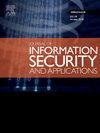基于租户感知的深度学习入侵检测系统,用于多租户SaaS网络中的DDoS攻击检测
IF 3.7
2区 计算机科学
Q2 COMPUTER SCIENCE, INFORMATION SYSTEMS
Journal of Information Security and Applications
Pub Date : 2025-10-03
DOI:10.1016/j.jisa.2025.104251
引用次数: 0
摘要
软件即服务(SaaS)平台是云计算的一个重要方面,并且越来越容易受到分布式拒绝服务(DDoS)攻击,这主要是由于其底层多租户架构。传统的入侵检测系统不能在租户之间有效地泛化,导致高水平的误报和有限的适应性。我们通过为多租户SaaS环境设计一个租户感知的基于深度学习的入侵检测系统来解决这一风险。我们的混合模型采用胶囊网络提取空间特征和长短期记忆(LSTM)网络识别时间模式。我们的创新贡献是一个新的租户嵌入系统,该系统将租户特定的行为上下文整合到模型中,使系统能够在不断变化的攻击流量背景下捕获良性行为的变化。在CICIDS2017、CICDDoS2019和CSE-CIC-IDS2018数据集上的实验评估表明,我们提出的模型在租户之间实现了更高的准确性、精密度和泛化。此外,还进行了各种烧蚀试验来验证我们的模型。然而,零射消融研究显示,对看不见的租户的有效性降低。这证明了租户嵌入的重要性,并激励了未来对自适应机制的研究。我们还集成了基于shap的可解释性分析,以提高系统的透明度,并提供对功能重要性的见解。我们的工作朝着为自适应多租户SaaS环境开发实用且可解释的IDS解决方案迈出了第一步。本文章由计算机程序翻译,如有差异,请以英文原文为准。

A tenant-aware deep learning-based intrusion detection system for detecting DDoS attacks in multi-tenant SaaS networks
Software-as-a-Service (SaaS) platforms are a crucial aspect of cloud computing and are increasingly vulnerable to Distributed Denial of Service (DDoS) attacks, primarily due to their underlying multi-tenant architecture. Conventional intrusion detection systems cannot generalize effectively across tenants, resulting in high levels of false positives and limited adaptability. We have addressed this risk by designing a tenant-aware deep learning-based intrusion detection system for multi-tenant SaaS environments. Our hybrid model employs Capsule Networks to extract spatial features and Long Short-Term Memory (LSTM) networks to recognize temporal patterns. Our innovative contribution is a new tenant embedding system that incorporates tenant-specific behavioral context into the model, enabling the system to capture variations in benign behaviors within the context of evolving attack traffic. Experimental evaluations on CICIDS2017, CICDDoS2019, and CSE-CIC-IDS2018 datasets demonstrated that our proposed model achieved higher accuracy, precision, and generalization across tenants. Furthermore, various ablation test is done to validate our model. However, the zero-shot ablation study shows reduced effectiveness on unseen tenants. This demonstrates the importance of tenant embeddings and motivating future research on adaptive mechanisms. We also integrated SHAP-based interpretability analysis to improve the transparency of the system and provide insights into feature importance. Our work takes initial steps toward developing practical and explainable IDS solutions for adaptive, multi-tenant SaaS environments.
求助全文
通过发布文献求助,成功后即可免费获取论文全文。
去求助
来源期刊

Journal of Information Security and Applications
Computer Science-Computer Networks and Communications
CiteScore
10.90
自引率
5.40%
发文量
206
审稿时长
56 days
期刊介绍:
Journal of Information Security and Applications (JISA) focuses on the original research and practice-driven applications with relevance to information security and applications. JISA provides a common linkage between a vibrant scientific and research community and industry professionals by offering a clear view on modern problems and challenges in information security, as well as identifying promising scientific and "best-practice" solutions. JISA issues offer a balance between original research work and innovative industrial approaches by internationally renowned information security experts and researchers.
 求助内容:
求助内容: 应助结果提醒方式:
应助结果提醒方式:


